Description of the purchased and features of its cultivation
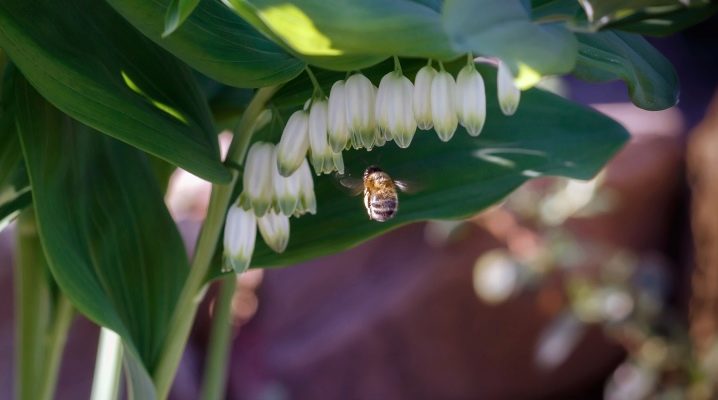
Kupena is a garden plant that is very similar to a lily of the valley, only larger. In fact, this plant came from exactly the same family as the lily of the valley, in fact, it is a forest flower with its own characteristics in terms of adaptation to the soil and further growth.

general description
Kupena (all its types) is perennial, it does not require annual excavation from the ground... it herbaceous plant, the stems of which reach a height of 15 to 150 cm. It belongs to such a family as lily of the valley, or liliaceae, which, in turn, belong to asparagus. The color of the leaves is green above and gray-greenish below, they themselves are quite large, have an oblong shape and reach a length of 8 to 14 cm.The flowers are located in the axils of the leaves, their flowering begins in April or June, and the full ripening of the fruits occurs in July-August. Kupena has a number of names: sindrik, garden lily of the valley, Solomon's seal, wolf grass, deaf lily of the valley, wolf's canine, medicinal.
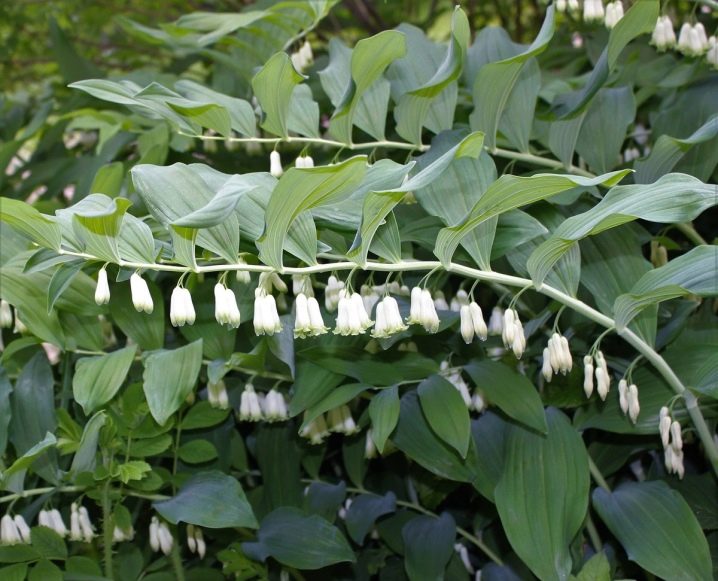
The plant has a thick rhizome, which is brown in color, by itself it is creeping and is located in a horizontal position... Different species have externally different root systems, some have a thick rhizome, and others with enlarged segments that resemble potato tubers. Also, some species are distinguished by the fact that they are suitable for human consumption and are not poisonous, they contain starch and sugar. The rhizome of the kupena has the peculiarity of lignification.
Under natural conditions, the common kupena can be found on the slopes and meadows. It is very difficult to call a specific place the birthplace of this plant, it grows everywhere and on all continents.
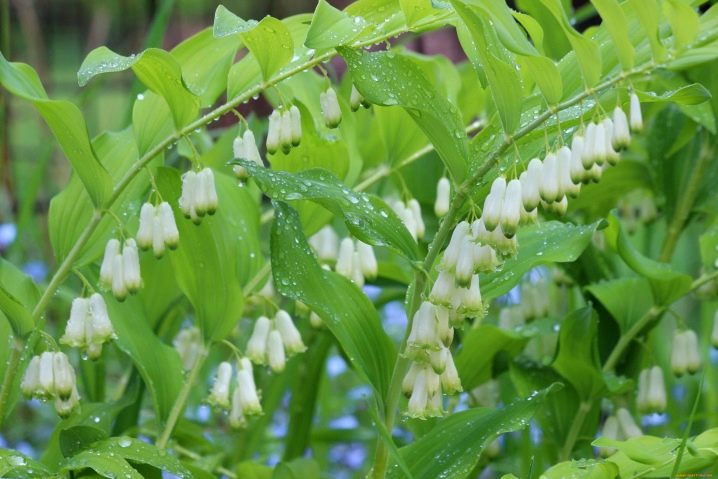
Types and varieties
A considerable number of species of this plant are distinguished.
- Whorled... She is undersized, grows to about 60 cm. Its stem is erect, has a green tint or with the addition of red. The plant got its name from the arrangement of the upper leaves in a whorled order, while the lower leaves of the kupena are arranged in regular order. The flowers of the plant are small, fragrant, bell-shaped. Inflorescences are rare, located in the leaf axils. After pollination occurs, the flowers will turn into fruits - bluish-black berries with small seeds. The rhizome is located in the upper layer of the soil, thick, branched.

- Variegated (striatum). This type of plant has variegated leaves. They are green in color with light veins, with a white-cream border around the edges. The plant is about 60 cm high, long flowering occurs from May to June. It does not lose its attractive appearance even after it has faded.

- Hairy, or pubescent... Perennial, reaching a height of 50 cm, the upper part of the stem drooping. The leaves are large, oval in shape. Flowers begin to appear from the leaf axils in May. This species is drought-resistant and unpretentious. It takes root well in places where the soil is sufficiently depleted. You can meet this type of plant in the middle zone of Eurasia, it prefers to grow in mountains, steppes and sparse forests.

- Squat, or low. A plant that loves moist soil, it is this variety that tolerates excessive moisture. It is considered slow growing. In the course of growth, dense and low clumps from 15 to 30 cm appear. The stems have a vertical direction.Leaves, in addition to being oblong, can also be ovoid. It blooms with white flowers, which are located in the axils of the leaves in the number of 2 to 5 pieces and have the shape of an elongated bell. The flowering of the plant begins in May-June, like many other varieties.
Use the squat bush in the design of the garden for the alpine slide. Feels good in dark, damp areas of the garden.

- Broadleaf... This plant variety reaches a height of up to 50 cm, the leaves have a pointed shape. The flowers are white with a greenish tinge, which bloom towards the end of May.
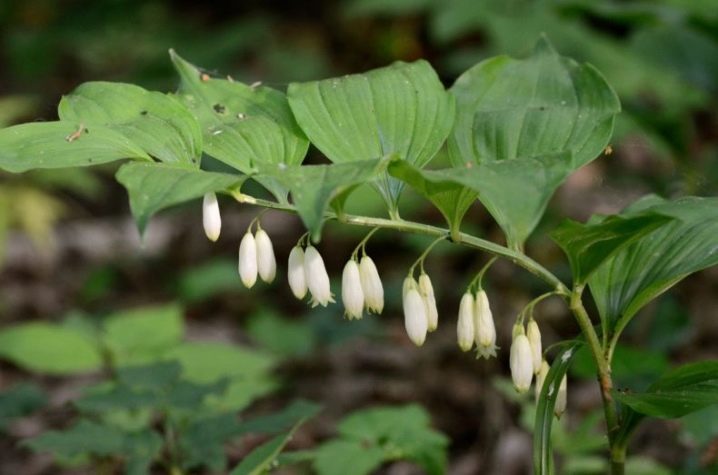
- Coopen Hooker. This plant is no more than 10 cm in height, so it is a rather unique species and is considered dwarf. The leaves are oblong and narrow, the flowers are a delicate purple hue. At the time of flowering, this sort of kupena looks amazing in combination with juicy greens.

Berries or fruits bought are poisonous, you should be careful with them... Their venom causes dizziness, indigestion and vomiting that last for days. Therefore, if there are small children in the family, the plant should be planted away from the paths, in the back of the garden, out of reach of the child.
Kupenes came to our gardens from the forests.

Landing
Kupena is an absolutely unpretentious and hardy plant, well suited for beginners who have just started gardening.
A strong root system and main stem begin to appear in the first year of planting. The rhizome itself begins to grow not in depth, but in breadth. In the second year of the plant's life, the first shoot begins to form.
When the growing season passes, in the fall, the ground part of the plant dies off, new stems are formed and grow already underground, and in spring they come out of the ground. Such a cycle lasts up to about 16 years for the kupena.
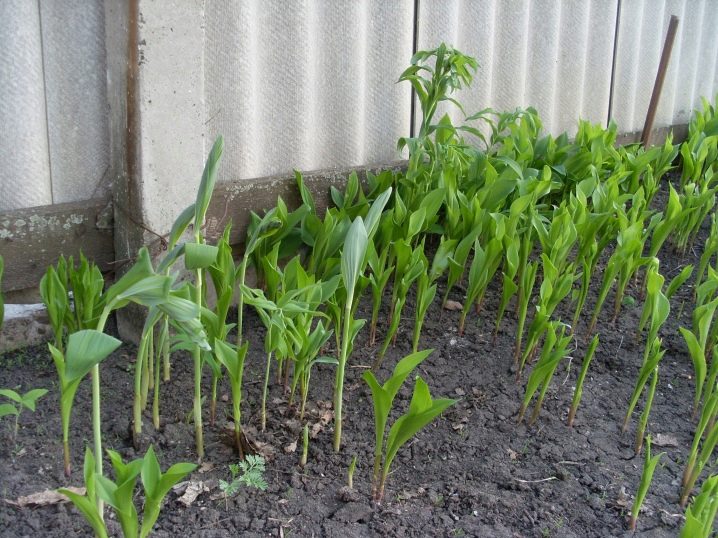
Care
Planting in open ground begins in early autumn, in September... A plant planted in spring (April-May) will also take root well, but it will undergo a long adaptation, which is why there may be no flowering at all in the current year.
Before planting, bought in open ground, it is necessary to prepare a place (bed). For planting, a recess 10-15 cm deep is suitable, sand or crushed stone is used for drainage, and compost will not be superfluous.
Kupena is not whimsical, therefore it does not require complex maintenance. The plant independently exists and develops, given that the kupena is considered a forest flower. But she will still respond to care with abundant flowering and lush foliage.

Watering and loosening
Watering is necessary for the purchase only during the dry season. The land on which the kupena grows just needs to be slightly moistened. The plant will even have enough watering from rain or moisture from groundwater. If the store is filled, then it will become weak and prone to various diseases, as well as attacks of insect pests..
Loosening of the kupena should not be carried out, since the rhizome is fragile and shallow, therefore it can be easily damaged, but in order not to form a crust on the surface, it is worth using mulch (the soil will retain moisture and friability for a long time).
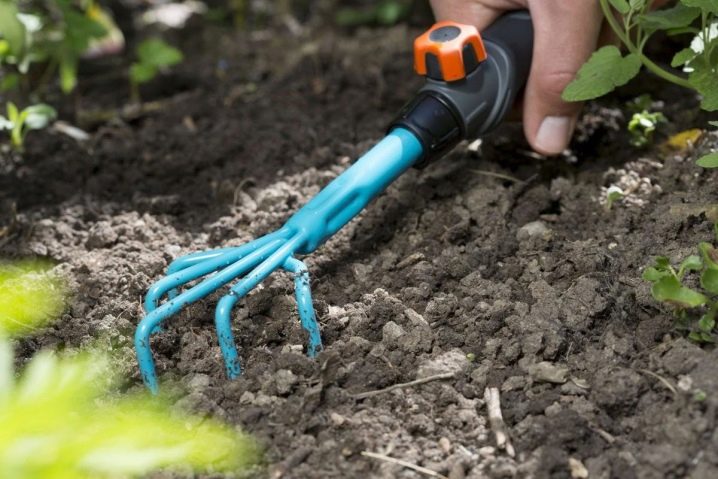
Top dressing
If the plant is planted on fertile soil or the bed was well fertilized during planting, then feeding can be done once a season.
Usually they feed the kupena in the spring, when the formation of sprouts is just beginning. You can feed it at the beginning of autumn, then during the winter it will gain strength for a spring exit from the earth.
Humus should be scattered over the area where the plant is planted (it should be laid back so that the roots of the plant do not burn).
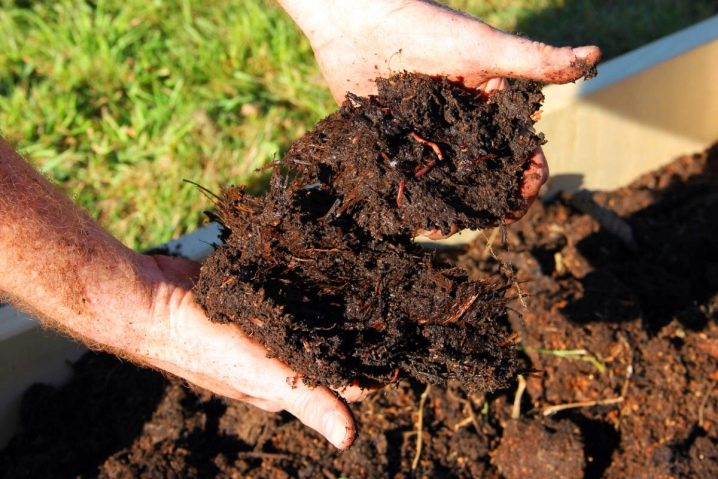
Wintering
The ground part of the kupena dies off in the fall and only the rhizome hibernates in the soil. You can cut off the upper part yourself, while leaving only a small stump of about 4 cm.
The plant tolerates cold perfectly, given that it grows independently in different areas, but if winter is predicted to be severe, then it is worth covering the bath with dry fallen leaves or sawdust. In the spring, all shelters must be removed so that the shoots can fully grow. This should be done early in order to avoid the debate of the sprouts.

Transfer
At the end of the frost, you can start transplanting the kupena, or you can also transplant it in the fall, before the onset of frost. The survival rate of this plant is quite high.
The advantage of transplanting before frost is the presence of nutrients in the root system, which will contribute to the best adaptation in a new place.
The transplant itself is carried out by dividing the bush, which is a useful measure for buying every 3-4 years (after such a procedure, the plant becomes more lush and abundantly blooming). After digging the rhizome, it should be divided into parts in which an already formed bud is present, and then planted in a drained groove.
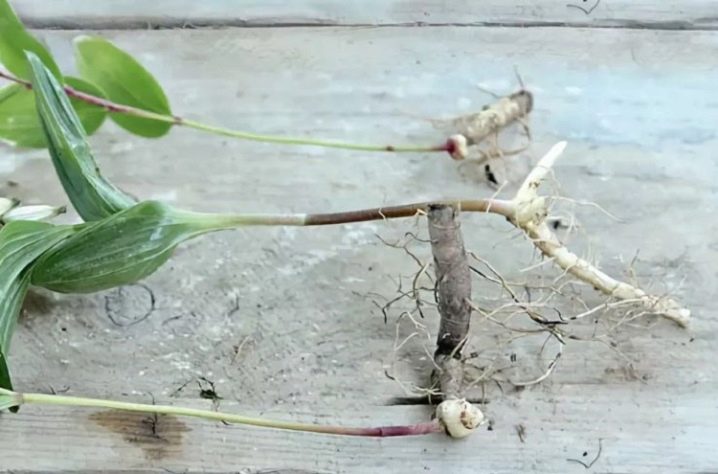
Reproduction
The methods of reproduction are as follows: division into parts of the bush and seeds, which can be freely purchased at the store. In general, gardeners try not to breed this plant with the help of seeds, since this is a rather time-consuming process and fruits do not always appear due to poor pollination. But it is worth considering that cultivation carried out by seeds can give a lot of seedlings.
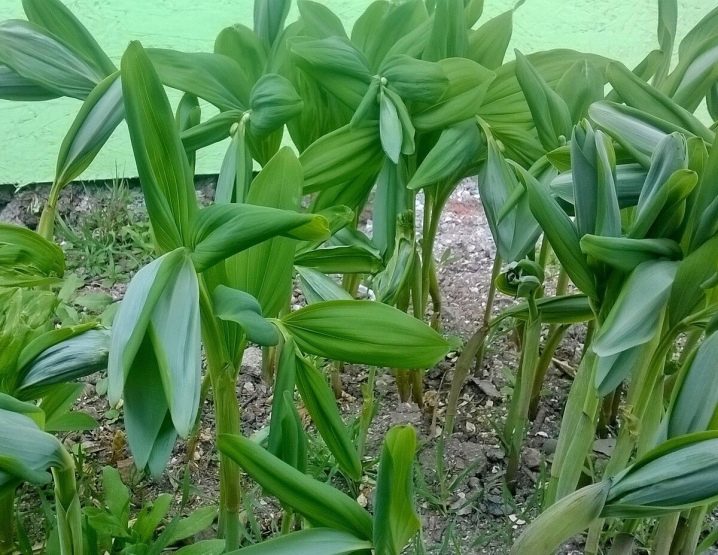
To obtain seeds from fruits, we adhere to following rules:
- collect ripe berries (fruits);
- extract seeds;
- get them wet from the pulp;
- carry out stratification;
- land in the ground and leave in a cool place.
After a 3-month period, the plantings should be moved to a warm place, and then again taken out to a cool place, for about 50 days. After such a procedure, they should be brought back to the heat, to room temperature.
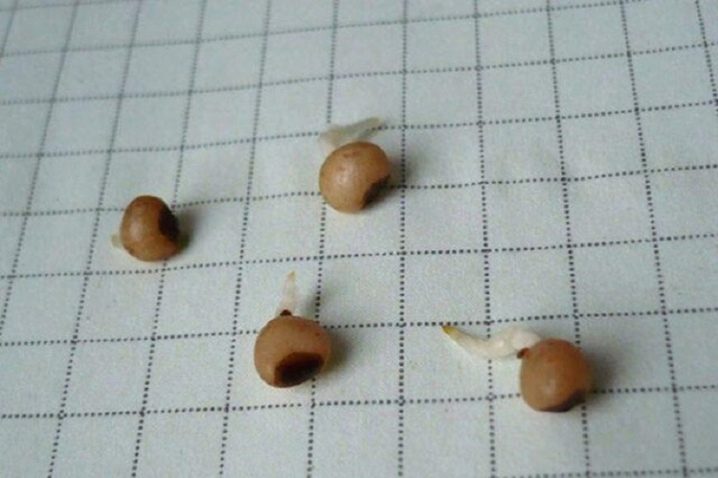
The structure of flowers does not allow many insects to freely collect nectar from them, only insects such as long-proboscis bumblebees are able to reach it, but their appearance is quite rare. It is the broadleaf kupena that can produce abundant berries.
Purchased seeds deteriorate very quickly; they will no longer be suitable for planting next season. Sow seeds only in the year they were harvested.... Before sowing, they undergo stratification, which lasts about 4 months, and then they are planted in peat soil. Planting by seeds and in open ground is not excluded.

Diseases and pests
Kupena tolerates diseases quite persistently, but if the soil is highly moistened for a long time, then gray rot may appear... Kupena will have to be treated with special solutions to get rid of this disease (Fundazol, Maximol). But do not forget about the affected areas, they should be removed first. In addition to gray rot, powdery mildew may appear on the plant, which loves moisture and low temperatures.
Slugs and caterpillars are the first enemies to buy... In folk ways, you can get rid of them with the help of mustard or hot pepper, which should be scattered around the plant. But for the best disposal of pests, it is worth resorting to spraying with special substances.
Solomon sawfly is also dangerous for kupena, it gnaws at the leaves of the plant to the veins. Flying flies lay the larvae, which begin to eat the green mass.
Insecticides will help to cope with them.
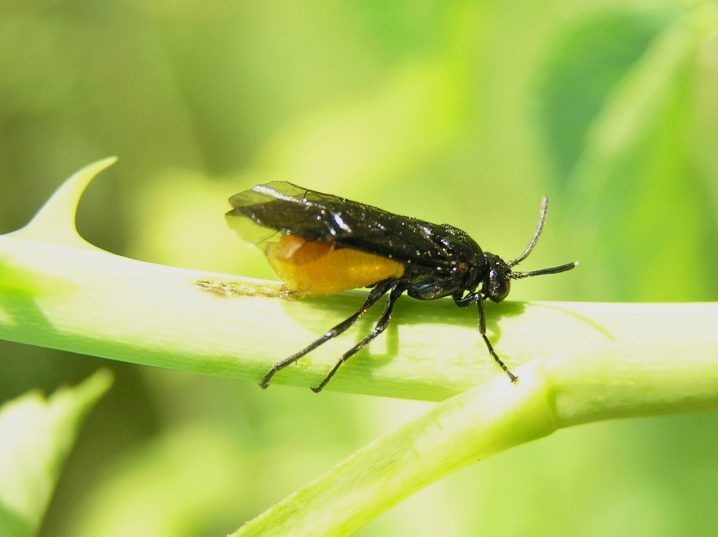
Application in landscape design
In darkened places, Kupena gets along with such plants as fern, dicentra. In a rocky garden, kupena goes well with irises, hosts, daylilies, forest geraniums, tulips. Unsightly corners of the garden are often decorated with this unpretentious flower.
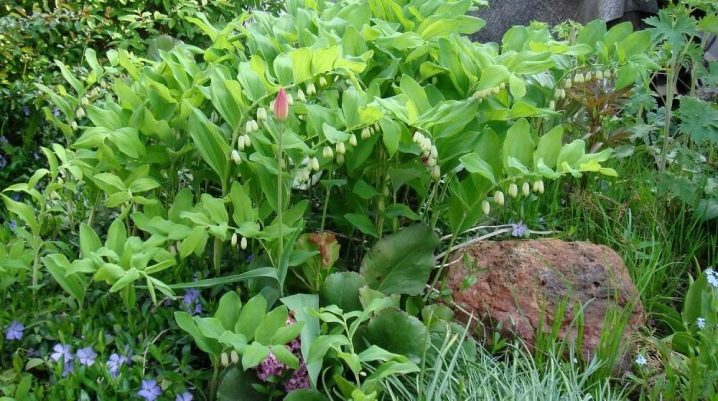
Alpine slides also decorate the kupena, combining it with other plants.
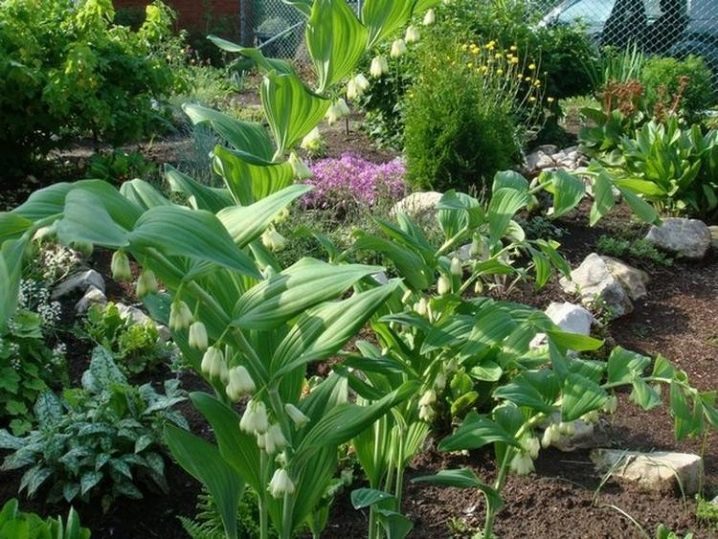
Along the hedge, the kupena will look great. When the bushes mature, the lower stems become bare and become unattractive, but the plant will well hide this drawback with tall shoots that grow well in the shade of the bushes.

In order to amazingly decorate the landscape with minimal loss of time, you should choose a coupon. It will harmoniously fit into the landscape of any garden, will decorate the flower garden.














The comment was sent successfully.